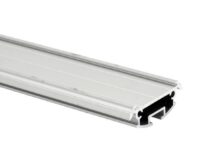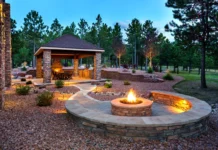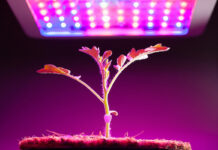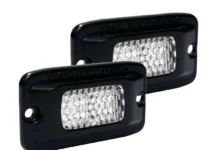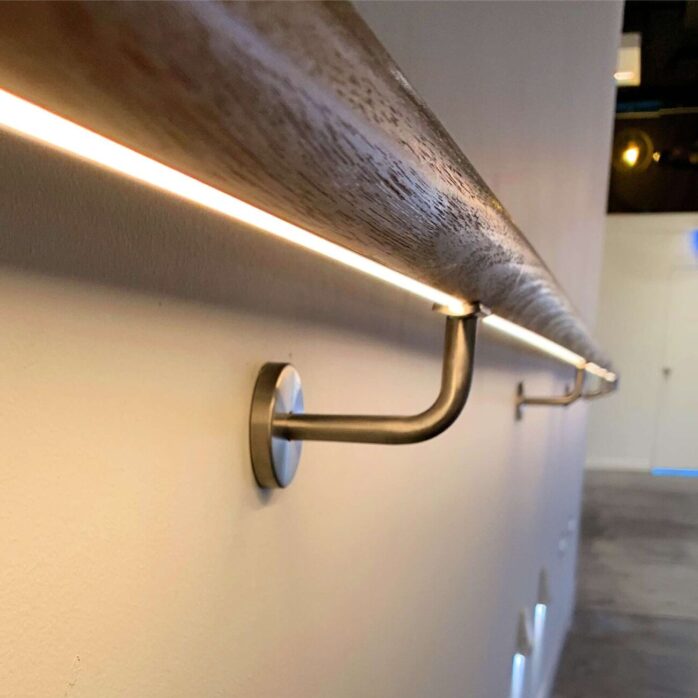
Lovely and functional, LED railings are a terrific architectural detail. Stairs and pathways benefit from illuminated handrails since they are safer and easier to use after dark.
The LED light shines downward, illuminating the ground around it to make it safer for pedestrians to walk on.
The railings are a lighting fixture that needs to be wired up. Consequently, you’ll have to give some thought to how you’ll wire the railing for electricity. LED strip lights pose no risk of electric shock because they are powered by low-voltage sources.
Here, we show you how to install an LED handrail lighting system in five easy steps.
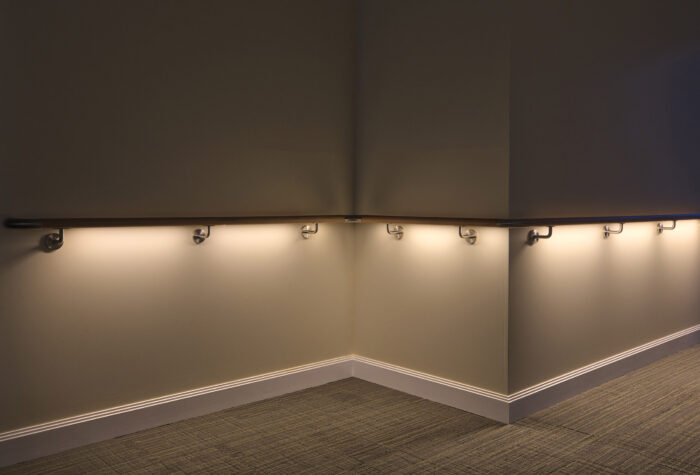
How to install LED railings in 5 steps
Installing LED handrail lighting is a great way to improve safety and comfort for residents and visitors. LED handrail lighting systems use less energy than traditional light sources, which can save money on your electricity bill. LEDs also last longer than other types of bulbs, so you will not have to replace them as often.
LED handrail lighting systems come in several different styles, so you can find the perfect system for your property. Some systems have fixed panels that mount directly to the railing, while others require mounting brackets or hangers. Regardless of the system used, installation is generally straightforward and requires only basic tools.
- Pre-determine how you will power the LED handrail lighting. The wiring for LED handrails put on the wall can be routed through the bracket or tacked onto the end if the rail is flush against the wall. In most cases, the cabling for post-mounted handrails can be routed up the interior of the post.
- Always use a level and a straight line to secure the wall brackets or posts to the wall.
- Join the mounting brackets to the handrail profile.
- Using the strip’s adhesive backing tape, secure the LED tape into the profile’s cut-out. The LED strip or a wire jumper can typically be run through the majority of the mounting hardware.
- Join the LED strip’s power supply to the strip’s connector, and then the connector to the wall outlet.
Once your system is installed, it is important to adjust the settings to ensure optimum performance. You can do this by checking the brightness and color temperature of each light unit, as well as adjusting the angle at which they are pointing toward the ground. Regular maintenance will keep your LED handrail lighting system operational and looking great for years to come!
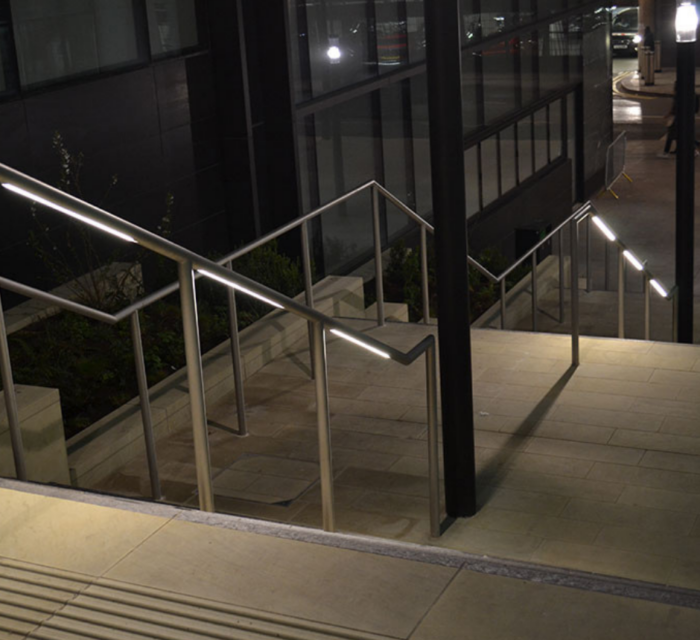
Types of LED handrail lighting
There are a few types of LED handrail lighting systems, each with its own advantages and disadvantages.
The most common type of LED handrail lighting system is the replaceable light bulb type. These systems use a replaceable light bulb that screws into the existing light fixture. This type of system is reliable and easy to maintain, but it can be less expensive to replace light bulbs than to upgrade the entire system.
Another type of LED handrail lighting system uses a built-in light source. These systems require no additional hardware or installation, but they may cost more than replaceable light bulb systems because they involve more components and materials. Built-in LED handrail lighting systems are typically more powerful and have better color reproduction than replacement light bulb types, but they can be less durable and may require servicing or replacement over time.
Finally, there is a hybrid type of LED handrail lighting system that uses both replaceable light bulbs and built-in lights. This combination provides the best of both worlds: reliability and affordability.
The benefits of installing an LED handrail lighting system
When compared to other lighting options that could be considered for the same space, LED handrail lighting uses less energy and produces fewer greenhouse gas emissions, which reduces expenses and benefits the environment.
LED handrail lighting is not only inexpensive, but also easy to replace if it ever burns out or becomes damaged.
LED lights stand out due to their plethora of color options, which set them apart from incandescent and fluorescent bulbs. Colors have the ability to evoke emotional responses and provide visual relief.
LEDs, in contrast to incandescent bulbs, use phosphorous coatings that modify the light output and prevent color fading over time.
LED handrailings are only one application of LED technology for illuminating pathways safely. Stairways and sidewalks can be fitted with gentle LED lighting systems (also known as LED stair lights, step lighting and illuminated nosing).
These multifunctional floor materials are designed to increase visibility in places with varying floor levels or elevations while simultaneously providing a slip-resistant, high-traction surface for foot circulation.
LED-lit handrails eliminate the potential for discomfort caused by glare in these settings by providing a gentle light source.
The lighting systems can make hand and bump rails more noticeable, and the light source’s fanned out beam of light makes it easier to spot variations in floor level or smoothness.
Given that LEDs emit light in only one direction, they do not cause glare for anyone who aren’t directly in the path of the beam.
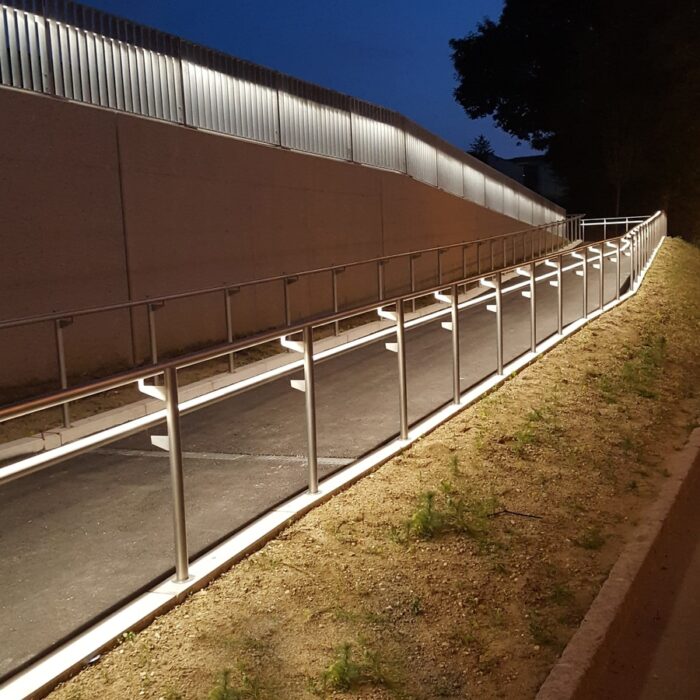
Disadvantages of LED handrail lighting
The advantages of LED handrail lighting systems are well known. The most important ones are that they consume less energy, last a long time, and have low running costs. However, there are also some disadvantages to this type of lighting system which should be taken into account when making a decision on whether or not to retrofit.
One disadvantage of LED handrail lighting is that it can be difficult to see in darker conditions. This is because the light from LEDs is directional, so it only reaches objects near the light source. This means that if you want to see something far away, you will need to use more light than if the railing was lit with incandescent or fluorescent lights.
Another disadvantage of LED handrail lighting is that it can be difficult to make repairs or changes if something goes wrong with it. Because LEDs do not contain any moving parts, they are less tolerant of damage than other types of lighting systems and may need to be replaced entirely if they are damaged beyond repair.

